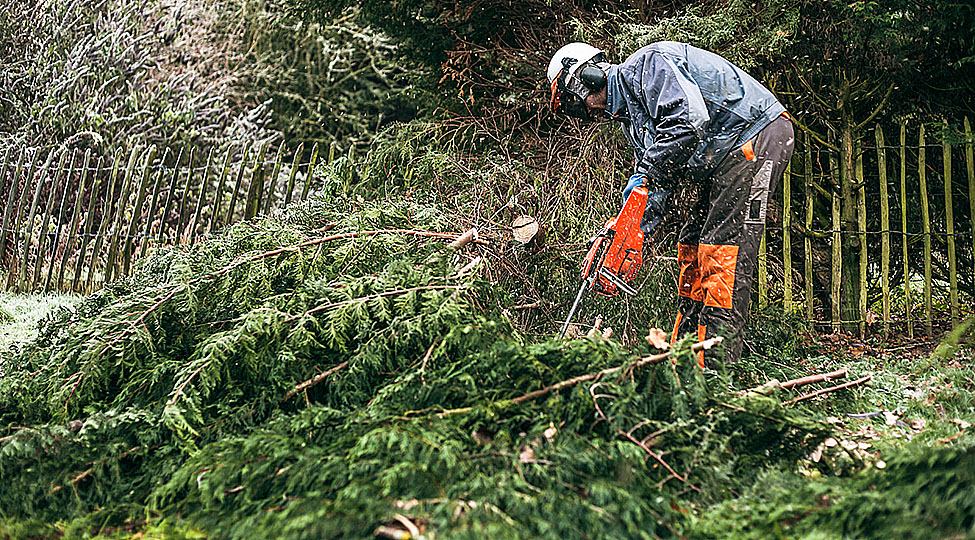Tree rotting is very common, especially in the warmer and humid months. Armillaria is a type of fungus that can affect tree growth a lot. Here is everything you need to know about it so you can spot the signs and decide if you can save it or get it removed by tree cutting services.
What Is Armillaria Root Rot?
Trees like ferns, succulents, and palm trees are woody and their roots and branches can be exposed to a specific type of fungus that can eventually rot the tree and lead to its death. Armillaria is a type of fungus, derived from a family of fungi called Armillaria, which translates to “oak tree fungus”. This fungus can thrive in many areas and it is found in house backyards, vineyards, clusters of trees, forests, and damp places where tree growth is abundant.
Although this disease is known as Armillaria root rot, it attacks the branches of trees and the woody part of the trees, preventing the supply of nutrients from the root to the bark and that can lead to disastrous results. This fungus attacks the bark and kills the vascular cambium of the tree, which can lead to severe issues.
The tree will start to lose its main channel of nutrients and over time, the leaves and flowers/fruits of the tree will wilt and prune. The end result will be the death of the tree after some time has passed as the tree is not getting enough minerals and nutrients from the soil. Armillaria root rot is the killer of trees and it can be too late, once the damage is done.
Causes Of Armillaria Root Rot
There is no definitive cause of oak tree fungus. This fungus can thrive on dead trees for a long time and if there is a presence of healthy tree roots near the damaged ones, then this fungus can spread super quickly and lead to damage of epic proportions.
This fungus spreads quickly too, once it gains access to the healthy tree roots and it colonizes and multiplies. This can cause the roots of the tree to get damaged and the detrimental effects can travel up to the branches and bark as well.
How To Identify Armillaria Root Rot?
Here are some signs that indicate Armillaria root rot.
Yellow Leaves
The leaves of the trees will start to change their color from a healthy green to a murky yellow and that can be a huge indicator that the tree is not doing well. The yellowing of the leaves will start from the tip, where the leaf is the thinnest and then, it can travel upwards and towards the underside of the leaf, where it connects with the branch of the tree.
It will start immediately and the leaves will change their color drastically, so it’s a good thing to keep an eye out for this sign.
Stunted Growth
If the tree is young, then its growth will be affected. As soon as Armillaria takes charge and latches itself onto the tree, the growth will be affected. This is a sign that needs to be looked out for, in younger trees and shrubs, because they are growing and if there is a sudden halt in the increase of height, then it’s definitely alarming.
So, if you see a small tree that’s not growing as well as others, then it’s best to do an inspection because there might be fungus infestation on the bark or the branches of the tree and that can really damage the tree to no extent.
Fungus
Fungus growth may be abundant on the base of the bark. Fungus can be in different colors, but white, green, and brown deposits on the tree bark and branches are the most common. Brown spots on the tree branches can also be an indication of Armillaria root rot.
This fungus can thrive in water and humid places, so if trees are submerged or surrounded by water, then this fungus infestation can be the norm, in any season. Arborist services Bethesda take note for these kinds of signs to identify tree problems.
Mushrooms Near The Roots
There also might be clusters of mushrooms forming on the base of the tree, near the roots on the ground. Sometimes, the mushrooms can also grow on the side of the branches and the color of the branch may start to fade, after the growth of mushrooms.
The color of mushrooms depends on the severity of the fungus infestation, but they’re usually brown or dark red in color and they’re also poisonous at times, so it’s best not to touch them, otherwise an allergic reaction may flare up. The spores of the mushrooms can also spread far and wide and that can lead to infestation in nearby trees too.
Can You Treat Armillaria Root Rot?
Here are some things that you can do to prevent or treat Armillaria root disease and bring the trees back to life.
Look Out For Tree Wounds
If you want to prevent Armillaria root rot from worsening, then you need to look out for tree wounds. Tree wounds are large slashes or gaping holes on the tree bark and branches and they are caused by some birds like woodpeckers or bad weather like thunderstorms or heavy winds. Tree wounds can provide easy access for Armillaria spores and roots to take hold in the tree.
Water Your Trees
Trees that are dehydrated can also be victims of Armillaria root rot. It’s important to keep the trees hydrated and watered at all times. If you live in an area where droughts are normal and there’s not a lot of rainfall, then watering the tree is even more crucial, because dehydrated trees have weaker roots and they are not able to defend themselves from different fungi.
Trees naturally have their own defense mechanism that can help to defend against different tree wounds and diseases, but in order for the defense mechanism to work perfectly, the health and hydration of the tree are super important to keep in mind too.
Keep A Distance Between Trees
Since Armillaria root rot spreads quickly, it’s best to keep trees at a distance from one another. This is going to reduce the chances of Armillaria root rot being spread out. You also need to make it a habit to inspect trees from time to time, in order to prevent infestation of fungus from diseased trees to healthy ones.
If there is an unstable or leaning tree present in close vicinity with other trees, then it’s best to remove the tree, once and for all, in order to prevent further damage that can boost the infestation of Armillaria root rot. Moreover, trees near your HVAC system can also be problematic for your heating and cooling.
Be Careful In Specific Seasons
keep an eye out for specific seasons and times of the year, when Armillaria can latch onto trees. This can be different in different areas, but Armillaria thrives in the months of March and April when the temperature is high and the humidity is unbearable as well.
These are the perfect conditions for Armillaria to thrive and grow and this season can be detrimental for the trees as well. So, try your best to take care of trees during these months and seasons.
Conclusion
Armillaria root rot is a serious condition and it can affect trees adversely. If you know the ways to identify the root rot, then you can try to heal it. However, if the arborist suggests to cut down the tree, you should consult tree removal companies Chevy Chase.



